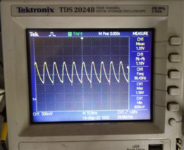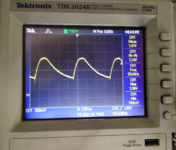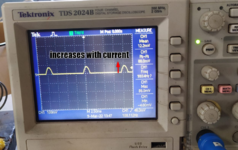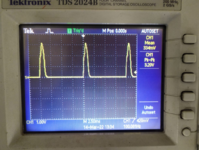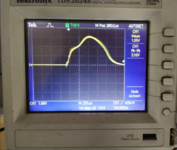vishweshgm
Member level 4
Hello,
I am trying to design 220V DC Battery charger. I have little experience in power electronics, but I have earlier successfully designed 112V,10A battery charger using SCR. The SCR charger took 140V,50Hz AC from transformer as iput and using half controlled (diode+scr) rectifier bridge and a capacitor delivered up to 135V 10A Current without any issues (Here is the simple schematic of working unit. Gate trigger is done using micrcontroller+pulse transformer driving circuit.

With that confidence I am now trying to take up 220V, 60A project. 230V,50Hz rms AC will be input Considering huge current, I have to go for full controlled bridge rectifier for sure. Also there is no room to add capacitor after rectification, as I feel it will be very huge value and I cannot add 100A rated inductor to manage capacitor charging load (cost issue). Here is my planned simple schematic:

I have not finalized parts to be used yet. But since the project is huge for my experience I am seeking help (1.)if its good idea to make 220V,60A DC Charger with simple topology shown above. I also intend to use a microcontroller based triggerring circuit (same as I did earlier) and this requires me to have a common ground (This is unavoidable, else efficiency of feedback voltage loop (PID control) decreases). (2.) Is it okay to have common ground when handling this much huge current (I am asking w.r.t functioning of the device ,not safety).
I am currently planning schematic, will post once its done.
I am trying to design 220V DC Battery charger. I have little experience in power electronics, but I have earlier successfully designed 112V,10A battery charger using SCR. The SCR charger took 140V,50Hz AC from transformer as iput and using half controlled (diode+scr) rectifier bridge and a capacitor delivered up to 135V 10A Current without any issues (Here is the simple schematic of working unit. Gate trigger is done using micrcontroller+pulse transformer driving circuit.
With that confidence I am now trying to take up 220V, 60A project. 230V,50Hz rms AC will be input Considering huge current, I have to go for full controlled bridge rectifier for sure. Also there is no room to add capacitor after rectification, as I feel it will be very huge value and I cannot add 100A rated inductor to manage capacitor charging load (cost issue). Here is my planned simple schematic:
I have not finalized parts to be used yet. But since the project is huge for my experience I am seeking help (1.)if its good idea to make 220V,60A DC Charger with simple topology shown above. I also intend to use a microcontroller based triggerring circuit (same as I did earlier) and this requires me to have a common ground (This is unavoidable, else efficiency of feedback voltage loop (PID control) decreases). (2.) Is it okay to have common ground when handling this much huge current (I am asking w.r.t functioning of the device ,not safety).
I am currently planning schematic, will post once its done.

